WARRNAMBOOL BOTANIC GARDENS
6-34 COCKMAN STREET WARRNAMBOOL, WARRNAMBOOL CITY
-
Add to tour
You must log in to do that.
-
Share
-
Shortlist place
You must log in to do that.
- Download report
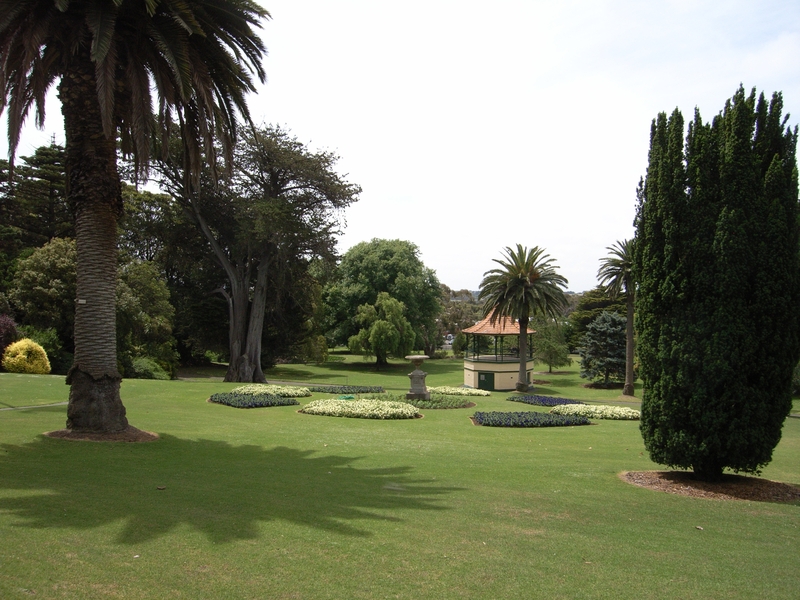

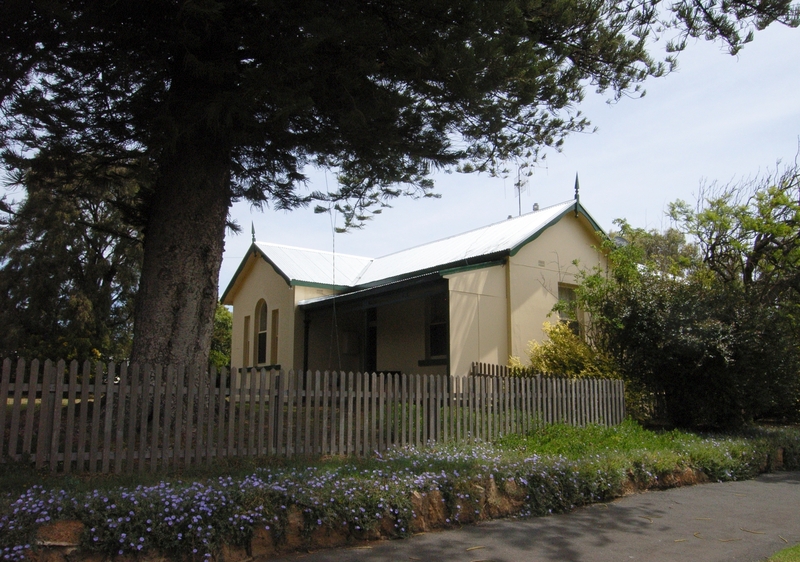
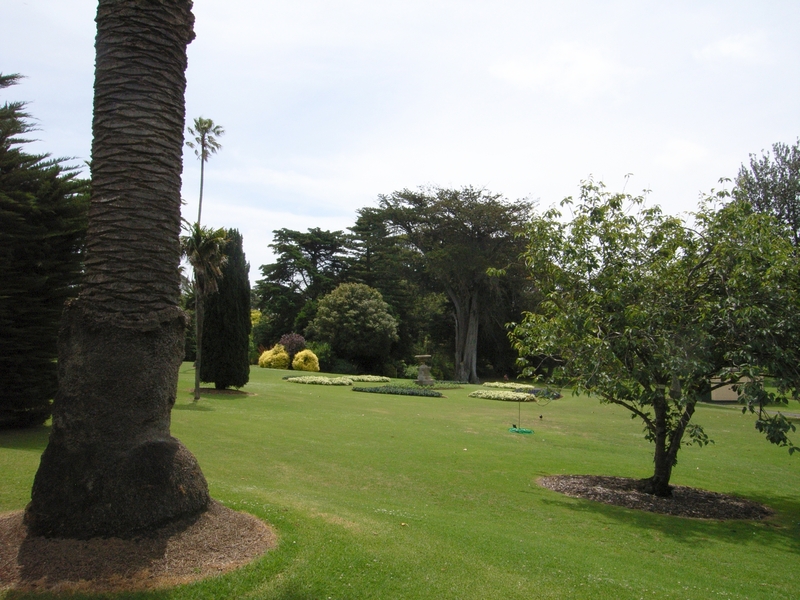
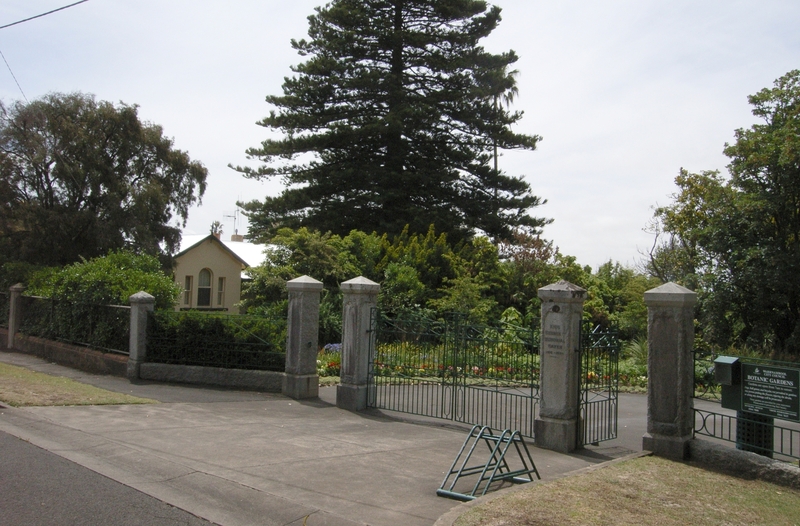
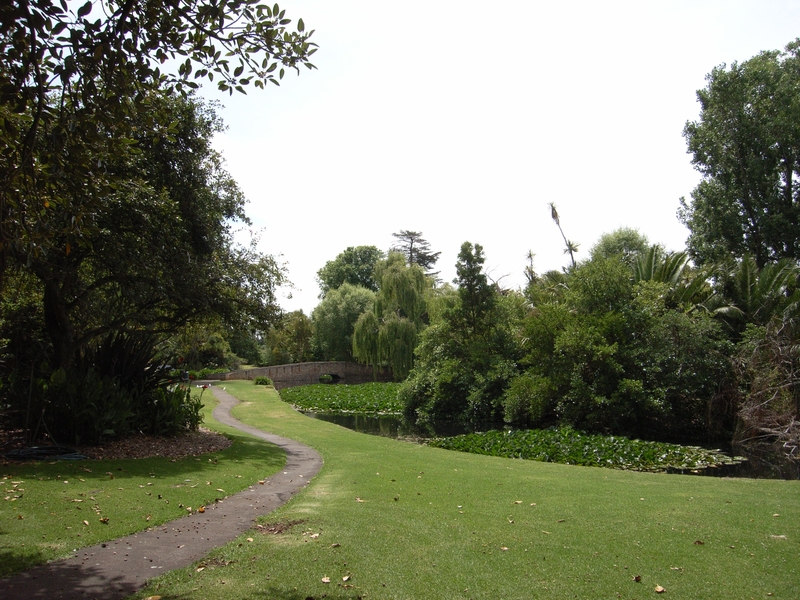

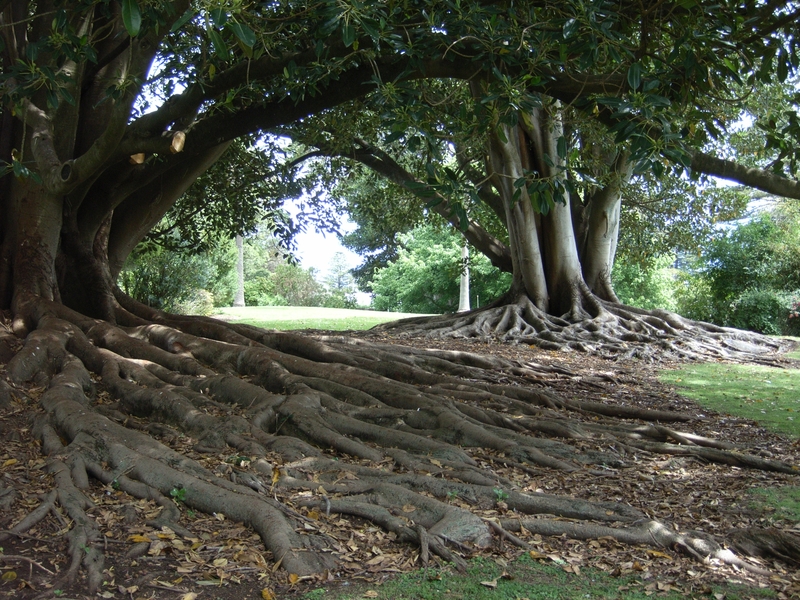
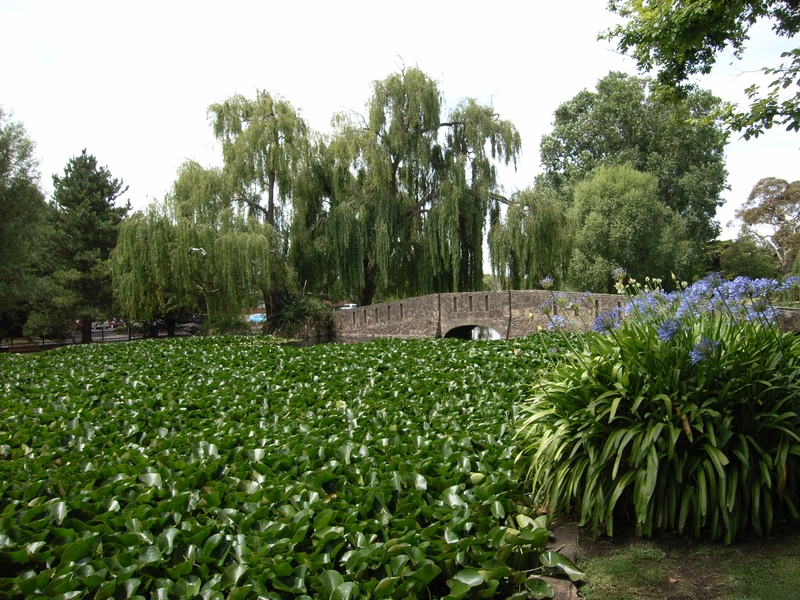
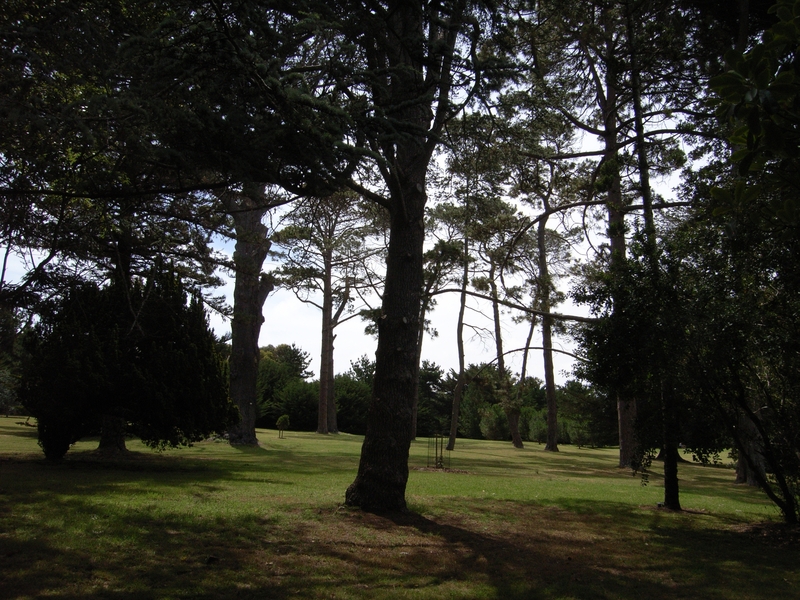
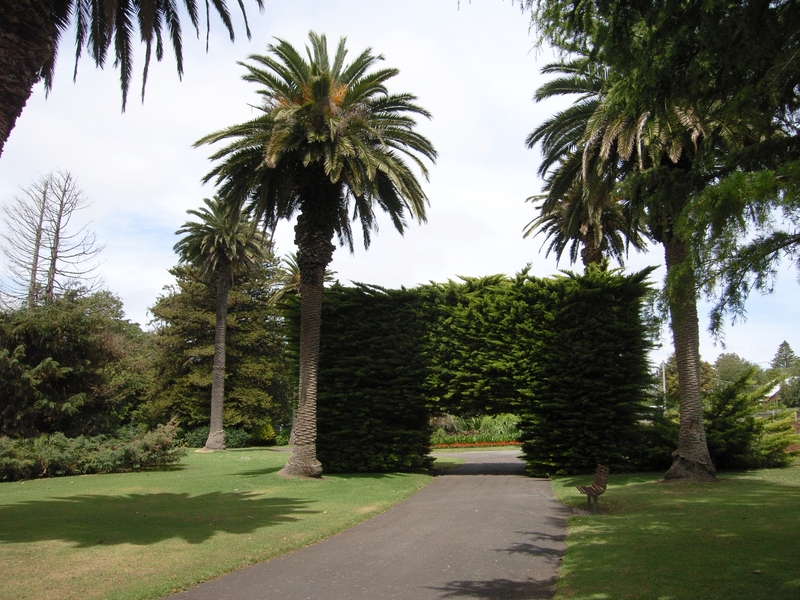
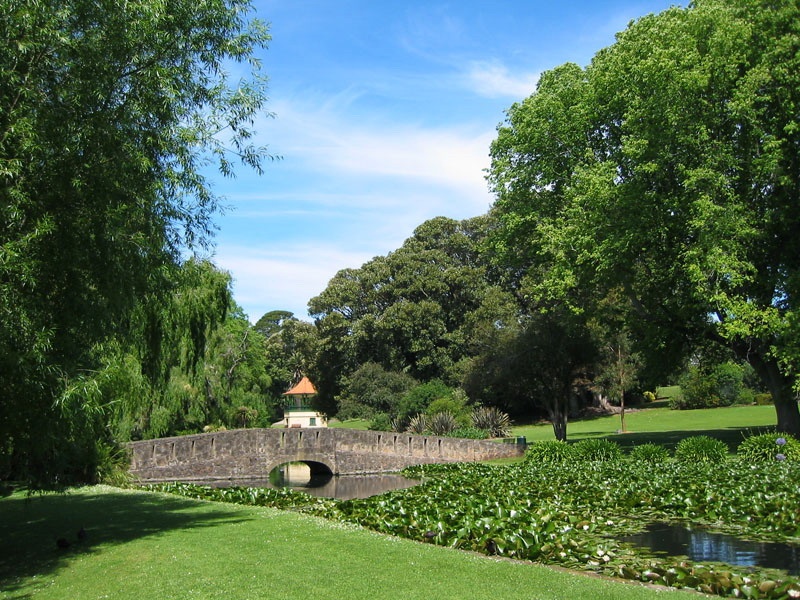

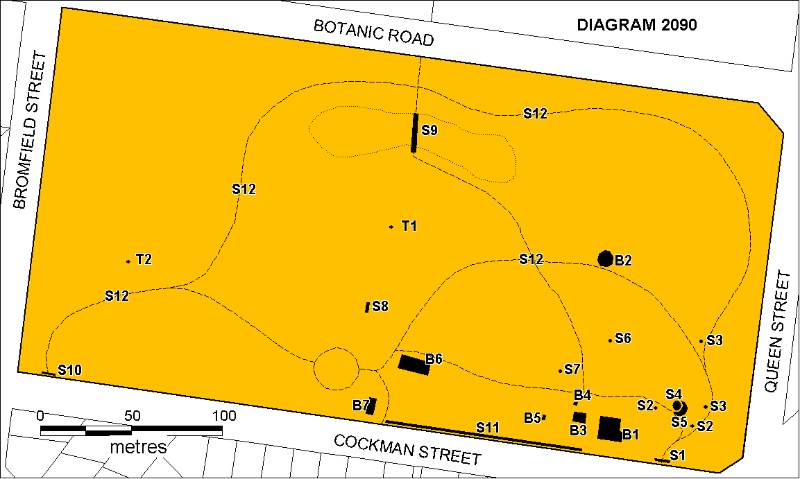
Statement of Significance
What is significant?
The township of Warrnambool was constituted a municipality in December 1855 and in 1858 successfully applied for a grant of £500 towards the formation of a botanical garden. A site of 10 acres near the Hopkins River was selected to the west of the cemetery reserve with an adjoining 10 acres reserved for future extension of the gardens. Charles Scoborio was appointed curator on 16 February 1859 and by this date the site had been fenced and a cottage for the curator erected.
This coastal site however proved difficult with the plants failing to thrive and it was eventually decided to select a new site in 1866. The present site of 20 acres was chosen for "its proximity to town, the undulating and romantic nature of its conformation, and the quality of its soil, or rather soils, suitable for growing almost any kind of vegetation." The site was "heavily timbered, with dense undergrowth of scrub, ferns and tussocky grass." Today remnants of the original flora still remain; Eucalyptus viminalis subsp. cygnetensis, Bursaria spinosa and Acacia melanoxylon.
In 1868 Ferdinand von Mueller, Director of the Melbourne Botanic Gardens and Government Botanist, sent a case containing 200 young pines, 50 Tamariscus and 10 Ailianthus and a parcel of seeds. The following year Charles Hortle was appointed the first gardener at the new site. In 1870 a four room cottage was erected and a well sunk. Scoborio was reappointed curator of the Gardens in July 1872 (retired in 1906) and his 1875 report included the planting of 130 Pinus insignis (now P. radiata), grubbing of blackwood trees and the planting of a Myoporum hedge around the nursery. The following year he commenced the building of a rockery near the entrance.
In 1877 William Guilfoyle who had been Director of the Melbourne Botanic Gardens for just four years and was busy redesigning the Gardens laid out by Mueller supplied the Warrnambool Council with a report and plan for a new garden layout. Guilfoyle's plan was approved on the 30 April and the plan is ".. a natural and picturesque design, having broad winding walks, pleasant lawns, with clumps of trees dotted here and there, . rockeries and a lake, . the design embraces the whole of the ground and will cause a rearrangement of beds and trees, it is not intended to interfere with the beds and rockery near the house, as they form a pleasant feature. The walks were to be 15 feet wide and islands in the lake were to be planted, one with willows and the other with tropical foliage."
A well and windmill were installed in the gardens in 1882. Construction of the lake commenced in 1884, and the rockery - enclosed fountain were all complete by 1886. Reticulated water was connected in 1890. In the 1890s a timber lattice fernery and ornamental fountain were erected and a small zoological collection was housed in the gardens reserve. The site was reserved for the purpose of a Botanic Garden in early 1897.
A cannon was relocated to the gardens in 1910 and in May 1913 a contract was let for the construction of a band rotunda and kiosk. Also during the early twentieth century three urns and a sundial were placed in the gardens, a "Lone Pine" planted in January 1934, and in 1936-39 the George V Memorial Gates were erected at the main entrance. At least three bridges have been built across the lake, the lattice fernery was rebuilt in 1985 and the Pinetum timber gates were re-erected in 1987. The Gardens contain an important collection of trees and shrubs, a pinetum, flowers beds and environments for the cultivation of large variety of plants
How is it significant?
The Warrnambool Botanic Gardens are of historical, scientific, aesthetic and social significance to the State of Victoria.
Why is it significant?
The Warrnambool Botanic Gardens are of historical significance as one of the earliest provincial botanic gardens; commencing in 1858 and in its current location since 1866. Botanic Gardens had already been established at Melbourne 1846, Geelong and Portland 1851, White Hills 1854, Williamstown 1856, Ballarat, Malmsbury and Hamilton 1857. The Gardens are important for the involvement of Charles Scoborio for a period of 34 years, provision of plants by Mueller from the Melbourne Botanic Gardens and the 1877 design by William Guilfoyle. The Gardens are the earliest known commission by Guilfoyle in regional Victoria and one of his most complete designs. Guilfoyle was appointed Director of the Melbourne Botanic Gardens in 1873 and redesigned the Melbourne Gardens over 36 years into one of the finest botanic gardens in the world and is regarded as one of Australia's greatest garden designers. He also prepared designs for other provincial botanic gardens, at Koroit and Horsham in 1880, Hamilton 1881, Camperdown 1889, and Colac 1910, and at Government House, Parliament House and a number of private gardens in western Victoria.
The Warrnambool Botanic Gardens are of aesthetic significance for the layout and planting developed to a design prepared by William Guilfoyle in 1877. Warrnambool, along with Hamilton Botanic Gardens, are the most intact of his provincial botanic gardens designs. The "Guilfoyle" landscape combines both picturesque and gardenesque styles, sweeping lawns and paths, water features, structures, botanical collections specimen trees and shrubberies, and extensive use of subtropical species and bold and strap foliage plants. The layout is an outstanding response to the sloping site, featuring broad lawns dotted with trees and dense shrubberies, internal and external vistas, views to the lake, and carefully located buildings and structures to form a design of outstanding quality. The curator's residence, gates, fountain and rockery, urns, bridge, lake and islands, rotunda and curving asphalt paths are key elements in the garden design. The Gardens are of outstanding beauty with seasonal change and contrasting plant forms and foliage, all combining to form an attractive landscape enclosed within a perimeter planting of pines and cypress.
The Warrnambool Botanic Gardens are of scientific significance for their extensive collection of trees and shrubs, succulents, bulbs, perennials and annuals. The planting retains remnants of the original flora; three old Eucalyptus viminalis subsp. cygnetensis, a Bursaria spinosa and a few Acacia melanoxylon. The planting includes an important Pinetum occurs at the western end, a conifer windbreak around the perimeter; a fernery planted with flora of the Otway Ranges; water plants in the lake; a bamboo collection, and a nursery and orchard. In the Pinetum is Victoria's largest and a rarely cultivated Soledad Pine (Pinus torreyana). The "Lone Pine" (Pinus brutia) planted in 1934 is one of four original Lone Pines in Victoria; the other trees occurring at the Shrine of Remembrance, Wattle Park and The Sisters memorial hall. This tree also has historical and social significance.
The Warrnambool Botanic Gardens are of social significance for their long association with the community, tourists and students. The Gardens are highly valued for their role in landscape, botanical and horticultural education. They continue to be an important venue for major public events, musical performances and official celebrations.
-
-
WARRNAMBOOL BOTANIC GARDENS - History
Warrnambool Botanic Gardens - A guilfoyle Garden.
The Gardens were originally sited near the mouth of the Hopkins River. Due to climatic conditions and overall inassessibility, in 1866, it was decided to relocate to the presentsite, which was central and offeredthe added attraction of 20 acres of undulating ground. The early development of the gardens owes much to Charles Scoborio, an early Curator and Ferdinand Von Mueller the then Government Botanist. Evidence remains, of the trees suggested by Von Mueller and planted by Scoborio.
In 1877 the Warrnambool City Council commissioned William Guilfoyle, who was director of the Melbourne Botanic Gardens, to design an appropriate layout for the site. His vision of sweeping lawns and long curving paths, where viewers can appreciate the beauty of their surrounding, was implemented by successive curators, and remains as an intact outstanding garden design.
HISTORY OF THE URNS
The elaborately detailed Edwardian urns were donated to the Warnambool Botaninc Gardens by the ex. Mayor of Warrnambool, Mr G. Ward, in October 1895.
It is thought that the urns may have been purchased from the display of urns, bought from Italy for the Great Exhibition in the 1890's. They stand approximately seven feet in height an appear' Italianate' in style.
Two urns are placed in the fountain precinct and the large urn is situated within the partiere on the southeastern slope.
Comparingthe urns with similar urns in other gardens they appear to be unique.
WARRNAMBOOL BOTANIC GARDENS - Permit Exemptions
General Exemptions:General exemptions apply to all places and objects included in the Victorian Heritage Register (VHR). General exemptions have been designed to allow everyday activities, maintenance and changes to your property, which don’t harm its cultural heritage significance, to proceed without the need to obtain approvals under the Heritage Act 2017.Places of worship: In some circumstances, you can alter a place of worship to accommodate religious practices without a permit, but you must notify the Executive Director of Heritage Victoria before you start the works or activities at least 20 business days before the works or activities are to commence.Subdivision/consolidation: Permit exemptions exist for some subdivisions and consolidations. If the subdivision or consolidation is in accordance with a planning permit granted under Part 4 of the Planning and Environment Act 1987 and the application for the planning permit was referred to the Executive Director of Heritage Victoria as a determining referral authority, a permit is not required.Specific exemptions may also apply to your registered place or object. If applicable, these are listed below. Specific exemptions are tailored to the conservation and management needs of an individual registered place or object and set out works and activities that are exempt from the requirements of a permit. Specific exemptions prevail if they conflict with general exemptions. Find out more about heritage permit exemptions here.Specific Exemptions:General Conditions: 1. All exempted alterations are to be planned and carried out in a manner which prevents damage to the fabric of the registered place or object. General Conditions: 2. Should it become apparent during further inspection or the carrying out of works that original or previously hidden or inaccessible details of the place or object are revealed which relate to the significance of the place or object, then the exemption covering such works shall cease and the Executive Director shall be notified as soon as possible. Note: All archaeological places have the potential to contain significant sub-surface artefacts and other remains. In most cases it will be necessary to obtain approval from Heritage Victoria before the undertaking any works that have a significant sub-surface component. General Conditions: 3. If there is a conservation policy and plan approved by the Executive Director, all works shall be in accordance with it. Note: The existence of a Conservation Management Plan or a Heritage Action Plan endorsed by Heritage Victoria provides guidance for the management of the heritage values associated with the site. It may not be necessary to obtain a heritage permit for certain works specified in the management plan. General Conditions: 4. Nothing in this determination prevents the Executive Director from amending or rescinding all or any of the permit exemptions. General Conditions: 5. Nothing in this determination exempts owners or their agents from the responsibility to seek relevant planning or building permits from the responsible authorities where applicable. Regular Site Maintenance : The following site maintenance works are permit exempt under section 66 of the Heritage Act 1995, a) regular site maintenance provided the works do not involve the removal or destruction of any significant above-ground features or sub-surface archaeological artefacts or deposits; b) the maintenance of an item to retain its conditions or operation without the removal of or damage to the existing fabric or the introduction of new materials; c) cleaning including the removal of surface deposits, organic growths, or graffiti by the use of low pressure water and natural detergents and mild brushing and scrubbing; d) repairs, conservation and maintenance to plaques, memorials, roads and paths, fences and gates and drainage and irrigation. e) the replacement of existing services such as cabling, plumbing, wiring and fire services that uses existing routes, conduits or voids, and does not involve damage to or the removal of significant fabric. Note: Surface patina which has developed on the fabric may be an important part of the item's significance and if so needs to be preserved during maintenance and cleaning. Note: Any new materials used for repair must not exacerbate the decay of existing fabric due to chemical incompatibility, obscure existing fabric or limit access to existing fabric for future maintenance. Repair must maximise protection and retention of fabric and include the conservation of existing details or elements. Minor Works : Note: Any Minor Works that in the opinion of the Executive Director will not adversely affect the heritage significance of the place may be exempt from the permit requirements of the Heritage Act. A person proposing to undertake minor works may submit a proposal to the Executive Director. If the Executive Director is satisfied that the proposed works will not adversely affect the heritage values of the site, the applicant may be exempted from the requirement to obtain a heritage permit. If an applicant is uncertain whether a heritage permit is required, it is recommended that the permits co-ordinator be contacted. Landscape :The process of gardening, including mowing, hedge clipping, bedding displays, removal of dead plants and replanting the same species or cultivar, disease and weed control, and maintenance to care for existing plants.
Replanting to maintain the landscape character or planting theme identified in the Statement of Significance
Management of trees in accordance with Australian Standard; Pruning of amenity trees AS 4373
Repairs, conservation and maintenance to hard landscape elements, buildings, structures, sculptures, fountains, monuments, ornaments, roads and paths, edges, fences and gates, drainage and irrigation systems
Works to be undertaken in accordance with an agreed conservation management plan or objectives
Erection of plant labels
Temporary event infrastucture,signage and lighting
Repainting in the same colour of previously painted surfaces
Removal of plants listed as noxious weeds in the Catchment and Land Protection Act 1994
Non-structural works and installation, removal or replacement of garden watering and drainage systems that occur at a distance greater than 5 metres from the canopy edge of a significant tree, plant or hedge,(structural works may require a permit if still on the registered land)
Pruning or removal of trees in accordance with the Code of Practice for Powerline Clearance[Vegetation] 1996, unless they are identified as significant
Removal of vegetation to maintain fire safety and to conserve significant buildings and structures
Buildings & Structures :Buildings Exteriors:
Minor repairs and maintenance.
Painting of previously painted walls, posts, and roofing.
Treatments to stabilise and protect timber, metal and masonry structures.
Removal of extraneous items such as external lighting, air conditioners, pipe work, ducting, flues, wiring, antennae, aerials, fly screens etc. and making good.Buildings Interiors:
Painting of previously painted walls and ceilings provided that preparation or painting does not remove evidence of the original paint or other decorative scheme.
Removal of paint from originally unpainted or oiled joinery, doors, architraves, skirtings and decorative strapping.
Installation, removal or replacement of carpets and/or flexible floor coverings.
Installation, removal or replacement of curtain track, rods, blinds and other window dressings.
Installation, removal or replacement of hoods, nails and other devices for the hanging of mirrors, paintings and other wall mounted artworks.
Refurbishment of existing bathrooms, toilets and or en suites including removal, installation or replacement of sanitary fixtures and associated piping, mirrors, wall and floor coverings.
Installation, removal or replacement of existing kitchen benches and fixtures including sinks, stoves, ovens, refrigerators, dishwashers etc and associated plumbing and wiring.
Installation, removal or replacement of electrical wiring provided that all new wiring is fully concealed and any original light switches, pull cords, push buttons or power outlets are retained in-situ. Note: if wiring original to the place was carried in timber conduits then the conduits should remain in-situ.
Installation, removal or replace of bulk insulation in the roof space.
Installation, removal or replacement of smoke detectors.
Installation of plant within the roof space.
Installation of new fire services including sprinklers, doors and elements affixed to plaster surfaces.
Demolition or removal of non-original stud/partition walls, suspended ceilings or non-original wall linings (including plasterboard, laminate and masonite), non-original glazed screens/partitions, non-original flush panel or part glazed doors, non-original bathroom partitions and tiling, sanitary fixtures and fittings, non-original kitchen tiling, fittings and equipment, lights, modern built-in cupboards, shelves and benches, cubicle partitions, computer and office fit out and the like.
Removal or installation of modern door and window furniture including hinges, locks, knobsets and sash lifts.
Removal of tiling or concrete slabs in wet areas provided there is not damage to or alteration of original structure or fabric.
Installation, removal or replacement of ducted, hydronic or concealed radiant type heating provided that the installation does not damage existing skirtings and architraves.
Installation, removal or replacement of electric clocks, public address systems, detectors, alarms, emergency lights, exist signs, luminaries and the like on plaster surfaces.
Installation of new built-in cupboards and shelving providing no alteration to the structure is required.Other Structures:
Minor repairs and maintenance.
Painting of previously painted walls, posts, and roofing in the same colour.
Treatments to stabilise and protect timber, masonry and iron structures.WARRNAMBOOL BOTANIC GARDENS - Permit Exemption Policy
Conservation and management of the Warrnambool Botanic Gardens should retain the landscape character (referred to as the "Guilfoyle style") to include conifers, palms, evergreen and deciduous plants, bold and tropical foliage, planted in beds, plantationsand specimen trees in sweeping lawns. The importance of the Botanic Gardens lies primarily in its layers of development and planting which combine to create a landscape and botanic gardens of significance. Future works should be guided by the following reports:
Warrnambool Botanic Gardens Conservation and Development Plan by SF Landscape Consultants Pty Ltd in conjunction with Jill Orr-Young & Patrick Mallon, 1995, clearly establishes the significance of the Gardens, and identifies significant fabric and provides conservation policies to guide the management of the Gardens and its components.Warrnambool Botanic Gardens Management Plan by Australian Landscape Management, August 2005.
-
-
-
-
-
MURWEH
 Victorian Heritage Register H0402
Victorian Heritage Register H0402 -
CHRIST CHURCH COMPLEX
 Victorian Heritage Register H0387
Victorian Heritage Register H0387 -
TIMBER CHRIST CHURCH SITE
 Victorian Heritage Inventory
Victorian Heritage Inventory
-
'The Pines' Scout Camp
 Hobsons Bay City
Hobsons Bay City -
106 Nicholson Street
 Yarra City
Yarra City -
12 Gore Street
 Yarra City
Yarra City
-
-











